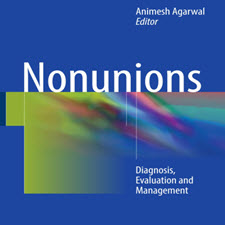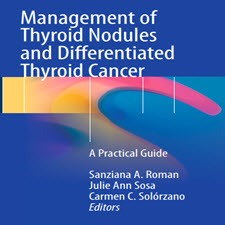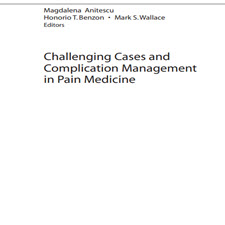بایگانی برچسب برای: management

استرس شغلی و مهارت مقابله با آن
اطلاع رسانیامروزه شغل یکی از موارد مهم در زندگی هر انسانی است. هر فردی نیاز دارد که در این جامعه شغلی داشته باشد و با کار کردن نیاز های خود را برطرف کند. درست است که با کار کردن درآمد کسب می شود و هزینه های زندگی از این جهت تامین می گردد ولی علاوه بر تامین هزینه های زندگی نیازهای زیر را هم تامین می کند:
1) احساس ارزشمند بودن
2) تماس اجتماعی قوی
3) اطمینان شایستگی
4) ورزش ذهنی و جسمی
![Handbook.of.Gynecology.[taliem.ir]](https://taliem.ir/wp-content/uploads/Handbook.of_.Gynecology.taliem.ir_.jpg)
Diagnosis and Management of Epithelial Ovarian Cancer
اطلاع رسانیOvarian cancer is the fifth most common cancer among women after breast, bowel, lung, and endometrial and remains the leading cause of death due to gynecological malignancy (Cancer.org 2016). Epithelial ovarian cancer accounts for the vast majority of ovarian malignancies with figures of around 85 %. Due to its insidious nature of presentation, it is often not diagnosed until the later stages leading to a high mortality rate. Five-year survival is very much influenced by stage at diagnosis. Over the last 20 years, incidence and mortality have remained fairly static, and much research is being undertaken looking for aids to diagnosis,
possible screening methods, and improvement in treatment options, both surgical and medical. In this chapter we will discuss presentation, diagnostic tools, and possible management regimes for patients with epithelial ovarian cancer.
![Diagnosis.and.Management.of.Breast.Tumors.A.Practical.[taliem.ir]](https://taliem.ir/wp-content/uploads/Diagnosis.and_.Management.of_.Breast.Tumors.A.Practical.taliem.ir_.jpg)
Diagnosis and Management of Breast Tumors
اطلاع رسانیAlthough the feld of radiology as a whole is subject to many levels of regulation and accreditation, breast imaging, and specifcally mammography, is a subspecialty subject to rigorous standards of care that are legally mandated in the United States. Two major entities collaboratively regulate breast imaging in the interests of quality and safety. Responding to issues and inconsistencies in matters pertaining to patient care and image quality, the American College of Radiology (ACR) developed the Mammography Accreditation Program in the late 1980’s as a means of periodic peer review and feedback from experts for improvement . Secondly, the Mammography Quality Standards Act (MQSA) was enacted by Congress in the 1990’s to set national quality standards through specifc regulatory requirements that were established by the Food and Drug Administration (FDA) for mammography . Under MQSA, all facilities that provide mammography services in the United States must be inspected by the FDA every year, earn accreditation by an FDA approved body (which includes the ACR, and the states of Arkansas, Iowa, and Texas) every 3 years, and be certifed by Health and Human Services every 3 years. Mammography facilities under the Department of Veterans Affairs, while not included in MQSA, undergo accreditation by the ACR to maintain the same standards of care.
![Management.of.Fractured.Endodontic.Instruments.[taliem.ir]](https://taliem.ir/wp-content/uploads/Management.of_.Fractured.Endodontic.Instruments.taliem.ir_.jpg)
Management of Fractured Endodontic Instruments
اطلاع رسانیA great variety of foreign objects may be found in the root canal compromising of cleaning and shaping procedures, with a potential impact on the treatment outcome. These foreign objects may be largely attributed to iatrogenic errors. They include: • Fragments of the whole range of instruments used in root canal instrumentation (Crump and Natkin 1970; Lambrianidis 1984; Zeigler and Serene 1984; Ingle et al. 1985; Molyvdas et al. 1992; Hülsmann 1994; Hülsmann and Schinkel 1999; Al-Fouzan 2003; Shen et al. 2004; Tzanetakis et al. 2008; Rahimi and Parashos 2009; Cunha et al. 2014). These fragments can be nickel-titanium (NiTi), stainless steel (SS), or carbon steel instruments (Fig. 1.1).
![Orthodontic.Management.of.the.Developing.[taliem.ir]](https://taliem.ir/wp-content/uploads/Orthodontic.Management.of_.the_.Developing.taliem.ir_.jpg)
Orthodontic Management of the Developing Dentition
اطلاع رسانیRespiration, swallowing, speech and mastication are the primary roles of the oral cavity. The human dentition has evolved to effectively carry out the latter function by having teeth with different sizes and shapes and by going through a transition from primary to secondary dentitions that ensure optimal space and occlusal relationships in the adult. Teeth start forming early during the sixth week of embryonic development and are governed by molecular signals that ensure the right teeth develop at the right time in the right place. The frst primary (deciduous) teeth emerge during infancy around 6 months of age, and following many dynamic stages of dental development and facial growth, the fnal secondary (permanent) third molar teeth erupt around the age of 19 years to complete the permanent dentition. However, even after this event, occlusal changes continue to take place through late-stage facial growth, alveolar development, postemergent eruption and occlusal forces.
![Contemporary.Management.of.Jugular.[taliem.ir]](https://taliem.ir/wp-content/uploads/Contemporary.Management.of_.Jugular.taliem.ir_.jpg)
Contemporary Management of Jugular Paraganglioma
اطلاع رسانیThe frst description of paraganglia of the temporal bone was by Stacy R. Guild, an anatomist from Johns Hopkins School of Medicine (Fig. 1.1). In a brief presentation at the American Association of Anatomists at the University of Chicago in April of 1941 entitled “A hitherto unrecognized structure, the Glomus Jugularis, in man,” Guild wrote: “Human temporal bone sections reveal structures in several respects like the carotid body, for which the name glomus jugularis is proposed. Usually they are in the adventitia of the dome of the jugular bulb, immediately below the bony floor of the middle ear and near the ramus tympanicus of the glossopharyngeal nerve…. Each glomus, wherever located, consists of blood vessels of capillary or precapillary caliber with numerous epithelioid cells between vessels. Usually, but not always, the vessels are the more prominent feature. Innervation and blood come from the same trunks that supply the carotid body; namely, glossopharyngeal nerve and ascending pharyngeal artery (through its inferior tympanic branch). Presumably it has functions like the carotid body, perhaps limited to a smaller circulatory region.
Suggestion: similar structures may be present along other parts of the peripheral
circulatory system”.

Nonunions Diagnosis, Evaluation and Management
اطلاع رسانیFracture healing is a very unique process in the human body. Bone is a unique tissue in that it can regenerate itself during the process of healing. This requires a very complex process which is regulated by various metabolic and hormonal factors to include various growth factors. These biological processes occur at the cellular level requiring recruitment proliferation and differentiation of many cells including endothelial cells, osteoprogenitor cells, platelets, macrophages, mesenchymal stem cells (MSCs) , and monocytes. These cells secrete various biologically active molecules at the site of injury to facilitate fracture repair. The bone morphogenetic proteins (BMPs) are osteoinductive agents which promote the proliferation and differentiation of undifferentiated cells to become either osteoprogenitor or chondroprogenitor cells. Although our bodies have the inherent capability to repair the fracture, the fracture healing process can be impaired for numerous reasons. When the fracture healing cascade stalls, a delayed union may develop, but the process may altogether cease. In a delayed union , both clinical evidence and radiographic evidence of healing do progress, but it lags behind what the normal healing time should be for a particular bone. There are however many factors to take into consideration such as the particular bone involved, the specific anatomic regions of the particular bone, the fracture pattern, as well as the method of treatment.

Management of Thyroid Nodules and Differentiated Thyroid Cancer
اطلاع رسانیThe incidence of thyroid cancer has tripled over the past 30 years (Fig. 1.1), with thyroid cancer now the eighth most common cancer in the United States and the ffth most common cancer in women . Although thyroid cancers of all sizes have increased in incidence, 87% of the rise in thyroid cancer is attributed to small papillary thyroid cancers (2 cm or smaller), which have an excellent prognosis . It is estimated that in 2015, there will be 62,450 new cases of thyroid cancer but only 1,950 deaths . Because of this rising incidence, thyroid cancer is projected to be the fourth most common cancer by 2030 . Not only has the incidence risen in the United States, the rise in thyroid cancer incidence has been seen across the world . This rise in thyroid cancer incidence is most marked in Korea, where thyroid cancer is now the most common cancer and the incidence is close to 70/100,000 . This worldwide unexplained rise in thyroid cancer incidence remains a major concern for physicians treating thyroid cancer. The greatest rise in thyroid cancer incidence has been seen in women . Women represent close to 75% of all thyroid cancer cases and the incidence has risen in both men and women but at a greater rate in women. From 1980 to 1983 versus 2003 to 2005, papillary thyroid cancer rates tripled among white and black females and doubled among white and black males .

Challenging Cases and Complication Management in Pain Medicine
اطلاع رسانیA 54-year-old male is brought to an emergency room via ambulance. He is obtunded and is breathing shallowly. He responds minimally to stimulation. His wife states that “he was sleepy today but had more pain than usual.” She calls for the ambulance when he stopped breathing. His past medical history is signifcant for multiple back surgeries, which have left him with chronic pain. His wife says his pain has gotten worse over the past few months. She also reports that he takes multiple medications for his pain, including opioids, but she does not know which specifc names or doses. He has a longstanding relationship with his current pain physician, and his wife believes that he may have recently had his opioid medication increased, although she is not certain. His blood pressure is 90/72, heart rate is 105, and respiratory rate is 6. Oxygen saturation is 92%, and oral temperature is 38 °C. The patient is not able to answer questions or follow commands, although he is arousable with sternal stimulation. Physical exam shows normal pupils that are round, equal in size, and reactive to light. A full body exam shows no signs of trauma or needle marks. No topical patches are found on his body. Breath sounds are shallow but clear. The abdomen is soft, and bowel sounds are absent.
![Management.of.Early.Progressive.Corneal.Ectasia.Accelerated.[taliem.ir]](https://taliem.ir/wp-content/uploads/Management.of_.Early_.Progressive.Corneal.Ectasia.Accelerated.taliem.ir_.jpg)
Management of Early Progressive Corneal Ectasia
اطلاع رسانیPrior to the advent of the corneal collagen cross-linking procedure, no conservative treatment for corneal ectasia existed, with 20% of keratoconus patients progressing to eventually require penetrating keratoplasty. Collagen cross-linking in the cornea as a treatment for ectasia was the breakthrough of Theo Seiler, MD, PhD, a professor of ophthalmology at Dresden Technical University, Germany at the time of the discovery. As he has told the story many times, Professor Seiler had his moment of inspiration in a dental chair, when he learned that UV light is used to harden dental fllings through the induction of cross-links. If the natural increase in non-enzymatic cross-linking that occurred with age led to increased corneal strength, could a physical means of inducing cross-linking be used to stabilize keratoconus? This initiated his frst investigation to determine “whether the elastic modulus of corneal tissue can be increased by cross-links of collagen fbrils induces by UV irradiation of the cornea” . Cross-linking was developed as a method of stabilizing the structurally weak corneas of patients with keratoconus, and has not only revolutionized the treatment of ectatic disorders, but has also become a platform technology including accelerated crosslinking (ACXL) with numerous additional clinical applications.


